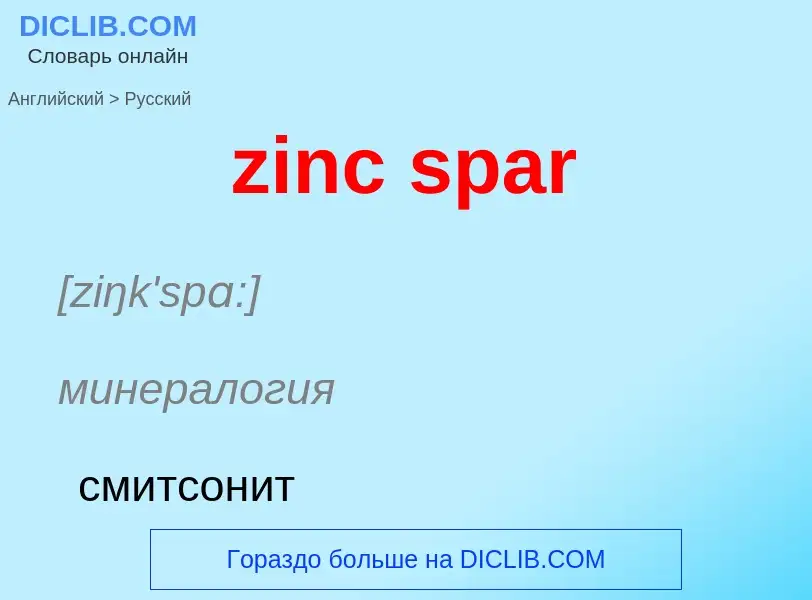Translation and analysis of words by artificial intelligence
On this page you can get a detailed analysis of a word or phrase, produced by the best artificial intelligence technology to date:
- how the word is used
- frequency of use
- it is used more often in oral or written speech
- word translation options
- usage examples (several phrases with translation)
- etymology
zinc spar - translation to russian
[ziŋk'spɑ:]
минералогия
смитсонит
['smiθsənait]
общая лексика
смитсонит
существительное
минералогия
смитсонит
цинковый шпат
[wiŋ'spɑ:]
авиация
лонжерон крыла
Definition
Wikipedia

Smithsonite, also known as zinc spar, is the mineral form of zinc carbonate (ZnCO3). Historically, smithsonite was identified with hemimorphite before it was realized that they were two different minerals. The two minerals are very similar in appearance and the term calamine has been used for both, leading to some confusion. The distinct mineral smithsonite was named in 1832 by François Sulpice Beudant in honor of English chemist and mineralogist James Smithson (c.1765–1829), who first identified the mineral in 1802.
Smithsonite is a variably colored trigonal mineral which only rarely is found in well formed crystals. The typical habit is as earthy botryoidal masses. It has a Mohs hardness of 4.5 and a specific gravity of 4.4 to 4.5.
Smithsonite occurs as a secondary mineral in the weathering or oxidation zone of zinc-bearing ore deposits. It sometimes occurs as replacement bodies in carbonate rocks and as such may constitute zinc ore. It commonly occurs in association with hemimorphite, willemite, hydrozincite, cerussite, malachite, azurite, aurichalcite and anglesite. It forms two limited solid solution series, with substitution of manganese leading to rhodochrosite, and with iron, leading to siderite. A variety rich in cadmium, which gives it a bright yellow color, is sometimes called turkey fat ore.



![Apple-green Cuprian smithsonite crystals. A second generation of [[drusy]] smithsonite was deposited in the crevasses between the larger growth Apple-green Cuprian smithsonite crystals. A second generation of [[drusy]] smithsonite was deposited in the crevasses between the larger growth](https://commons.wikimedia.org/wiki/Special:FilePath/Smithsonite-279094.jpg?width=200)


![honeycomb]] 'D' box [[leading edge]] honeycomb]] 'D' box [[leading edge]]](https://commons.wikimedia.org/wiki/Special:FilePath/Sandwich core.jpg?width=200)
